The Stakes Were Higher Than Life
In winter, the Swiss resort town of Montreux, located on the so-called Swiss Riviera on the shore of Lake Geneva with stunning views of the Alps, is usually already cool and rainy. Generally, due to the city’s proximity to the lake and mountain plains, the climate is mild, but during the winter tourist numbers drop significantly. It was an ordinary, unremarkable December day in 1971, the fourth day of a winter that was barely felt yet.
In the evening, a concert was taking place inside the Montreux Casino, and besides the usual respectable crowd typical for the venue, there were many “long-haired” and informally dressed people around: no joke, because that night the stage was ruled by none other than Frank Zappa — the renowned American eccentric, provocateur, but first and foremost, an outstanding musician.
He performed with his new band, The Mothers, and after the Swiss concert, they were scheduled to perform in France and Belgium. The choice of a somewhat non-“rock” place for a concert was not accidental: since 1967, the Montreux Casino hosted an annual world jazz festival, which after just three years expanded stylistically to include blues and rock performers (the rock revolution was advancing strongly worldwide then).
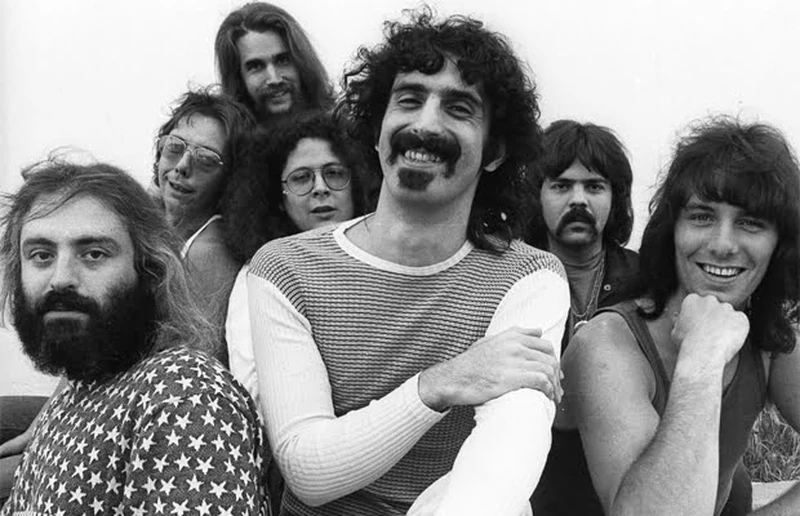
Frank Zappa and The Mothers
The concert was at its peak. The Mothers were performing “King Kong,” with a loud and convincing synthesizer solo, when suddenly the music stopped, and Zappa calmly announced into the microphone: “Ladies and gentlemen, stay calm, we have a fire.” And here one can appeal to the greatness of the English language because, as is known, in English “Fire” means both “fire” and “alarm,” and as the musician later recalled in an interview with French journalists, he pronounced the word as if announcing the title of a popular rock piece by Arthur Brown at the time.
The scene looked as if the musicians were about to start performing that song. Maybe the audience wouldn’t have understood anything if, after Zappa’s words, sparks hadn’t appeared from the hall’s suspended bamboo ceiling, which then began to smoke. A fire. “Ladies and gentlemen, stay calm and proceed to the exits in an orderly fashion.”
The Rocket That Nearly Killed Rock Music
Everything looked roughly like in the famous English joke when a butler, unable to convince his master that a flood was starting in London, finally announced with a calm face: “The Thames, sir.” The evacuation of the audience began, which eyewitnesses later claimed was calm and organized, with no casualties or injuries. The fire started because some joker decided to fire a flare gun at the ceiling during the concert, and interestingly, the police never identified who exactly did it.
But the most interesting part was that the classic lineup of Deep Purple was present at the casino that night — a band that had just released their outstanding album titled Fireball (ironic?) and had come to Switzerland to record their new album Machine Head, which would later become no less legendary.
Claude Nobs, founder and long-time director of the Montreux festival, helped spectators leave the building. Deep Purple’s bassist Roger Glover later recalled that the fire was initially small, and during evacuation, he even returned to the hall and approached the stage to examine Zappa’s equipment more closely, especially the two brand-new synthesizers. Unfortunately, both the synthesizers and all equipment (the only plus was that it was insured), along with the multi-story casino complex and concert hall, burned to the ground. The musicians had planned to start recording their album there the next day but, arriving in Montreux, decided not to unload their equipment yet and waited for Zappa and his band to finish their concert. Ultimately, Frank and his band had to cancel their European performances, and the Deep Purple musicians had to find a new recording location.
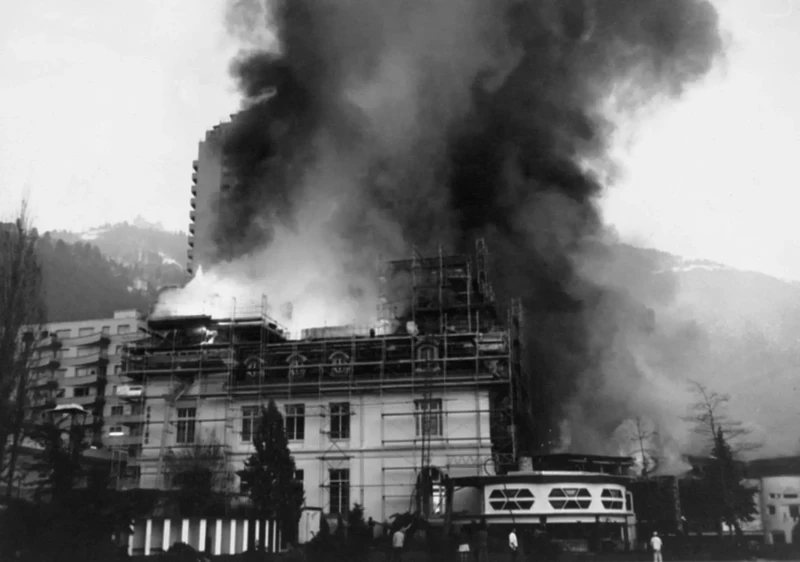
Fire at the casino, December 4, 1971
“Monsieur Blackmore, Open Up, Police!”
Meanwhile, shocked by the event of December 4, they headed to the Europa Hotel, where they stayed and watched through a large restaurant window how the casino was engulfed in flames (a strong wind was blowing from the mountains), and an impressive curtain of smoke rose over picturesque Lake Geneva. Here you can see unique footage of that fire, later featured in the documentary Made in Japan.
The situation’s intrigue was that Deep Purple needed not only the concert hall, which burned down completely: they had brought with them a mobile recording studio rented from The Rolling Stones (known as “The Rolling Stones Mobile”). Luckily, it was not used yet for recording, or else the fire at the Swiss casino would have incidentally affected three giants of world rock music at once.
Thanks to Claude Nobs, the British found the Pavilion Theater in the city center, where all the equipment was moved. Those spacious walls heard for the first time the legendary guitar riff by Ritchie Blackmore, which became one of the most famous guitar intros in rock history and would later inspire hundreds of beginner guitarists.
At that time, it was an untitled composition, without lyrics, simply marked as “Title #1,” and while the equipment was being moved and set up in the theater, rehearsals began — already in the evening. The recording of takes took place almost at midnight, and when Blackmore finally recorded a good take, the police burst into the theater. It turned out that the police had been called by residents of neighboring buildings disturbed by the loud British rockers. The theater staff delayed letting the police in, arguing that interfering with the creative process would be inappropriate. They were right, thus saving the future rock masterpiece from the valiant Swiss police.
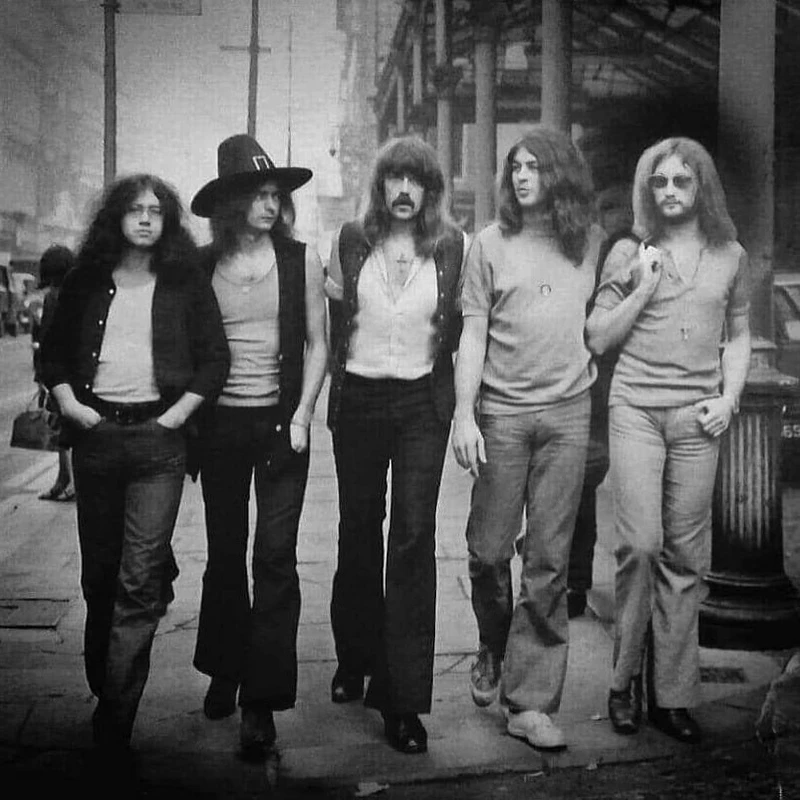
Deep Purple band
Rock Around the Mattresses
A new recording venue had to be found again. During the forced downtime, surrounded by fresh mountain air on the picturesque lake shore, another key event happened: one morning, Deep Purple bassist Roger Glover woke up in his hotel room with the phrase “Smoke On The Water” either dreamed or imagined at dawn. He shared this mysterious phrase with vocalist Ian Gillan, who sharply replied that it sounded “very druggy” and commented that Deep Purple was a band for drinkers, not smokers. After that, the phrase was forgotten for a while.
Eventually, with little time left and deadlines pressing, Deep Purple rented an entire hotel for recording. The “Grand Hotel” was located on the outskirts of Montreux, almost empty and unheated in December, so besides technical challenges and equipment, an industrial heater was brought inside first.
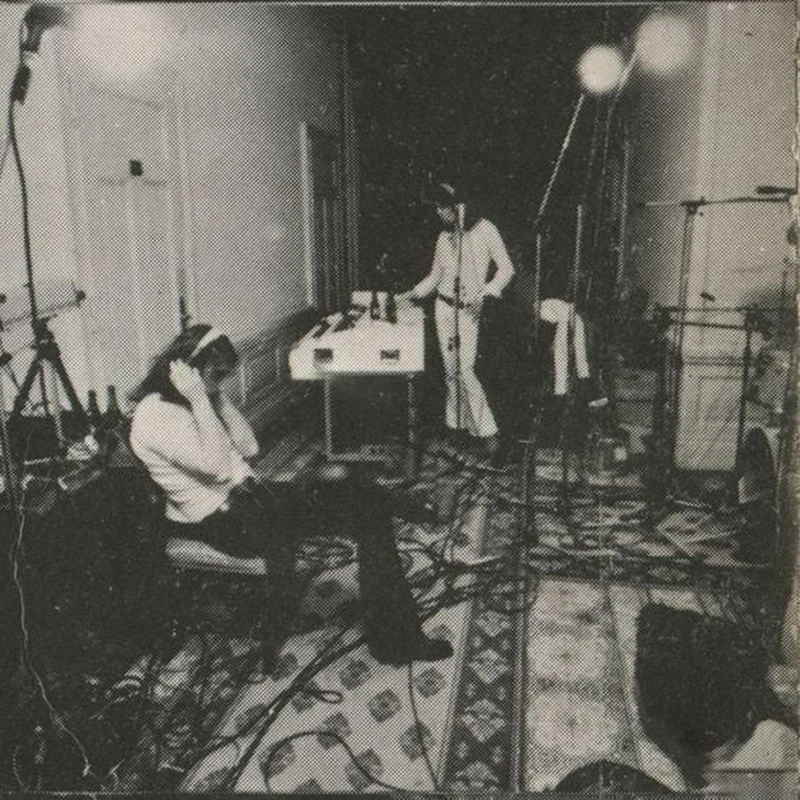
Studio in the Grand Hotel
An improvised studio was set up right in the corridor of the first floor, even building a wooden shield later compactly covered with mattresses from empty hotel rooms. Ian Paice’s drum parts were recorded separately in the corridor because he greatly liked the reverberation in the space between the rooms. The powerful and energetic album Machine Head was recorded under these conditions. The instrumental piece recorded earlier at the theater with extremely considerate staff was overlaid with lyrics, later becoming the song “Smoke on the Water.” Its lyrics basically describe the story above:
We came to Montreux, on the shores of Lake Geneva
Planned to record an album and brought the “mobile” (mobile studio)
Frank Zappa and The Mothers were the best around
But some fool took a flare gun and burned everything down.
Smoke on the water,
Fire in the sky…
One week after the fire, Frank Zappa performed a concert in London, renting equipment and instruments. Misfortunes didn’t end there: during that concert, one of the spectators pushed the musician, who fell onto the concrete floor of the orchestra pit, sustained multiple injuries, and spent half a year in a wheelchair. The Montreux Casino was rebuilt and reopened in 1975, and jazz festivals are still held there today.
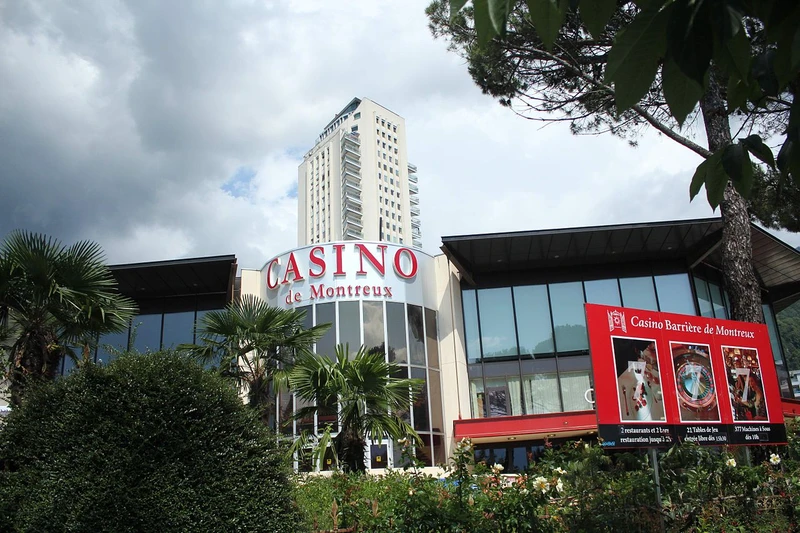
Montreux Casino
In 1966, popular Brazilian singer Astrud Gilberto, already basking in the fame of her “Girl from Ipanema” for several years, collaborated with American pianist Gil Evans to release the album Look to The Rainbow. The intro to the track “Maria Quiet” on that album closely resembles the intro from which “Smoke on the Water” begins. Who knows, maybe the wind from the Alpine slopes brought this motif to its authors? Here it is demonstrated visually:
Like every great hit, “Smoke on the Water” later inspired many covers, and with the rise of TikTok, its amateur performances in various forms have only increased. Almost every other TV singing show features surprising versions of it. In 1989, musicians from Deep Purple, Queen, Yes, Black Sabbath, Pink Floyd, and other bands united under the name “Rock Aid Armenia” to perform the hit and release a single, the proceeds from which were donated to the earthquake victims in Leninakan and Spitak.
